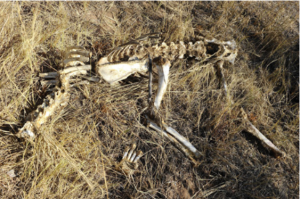|

At the beginning of September, we were approached by Vietnamese journalist An Dien working with the Thanh Nien newspaper in Vietnam.
He was preparing a story about the trade in lion skeletons from South Africa to Vietnam and we provided him with much information on this emerging trade.
It is refreshing to see that the Vietnamese media are beginning to report on this issue and drawing attention to both the legal and illegal trade which is decimating already endangered wildlife. It would be nice to see the mainstream UK and US press taking note and dedicating a few column inches and news reels to these devastatingly serious threats to our global wildlife heritage. It is only when enough people worldwide realise the enormity of this horrific trade, and the monies being made by the wildlife traffickers, will international pressure then be brought onto the National governments who both allow legal wildlife trade to continue and turn a blind eye to the corrupt officials who enjoy the fruits of the illegal trade?
Here are a few highlights of An Dien’s report:
• Lion bones, increasingly being substituted for tiger bones which are “in precipitous decline”, are a hot commodity, appealing to the affluent middle classes.
• The lion bone trade is mostly legal, to Vietnam and Laos but maybe fuelling a looming spike in lion poaching and thereby threatening their survival in the wild. We know that wild lions are already threatened with unsustainable levels of trophy hunting, human/livestock conflict, loss of natural prey, loss of habitat, etc. The bone trade is an added mortality factor that could severely impact populations of a species already in free-fall decline.
• CITES records show no record of official export of lion parts from South Africa to Laos and Vietnam before 2008, but show that 92 and 235 lion carcasses were exported to Laos in 2009 and 2010 respectively. Vietnam imported 91 lion skeletons in 2010. The 2011 figures are not yet available but are expected to be higher. This is the legal trade that adds fuel to the fire.
• Trophy hunters are interested only in the skin and the skull, leaving the breeders free to capitalize on the very lucrative market by selling the bones to Laos and Vietnam.
• A lion skeleton is worth up to $15,000 to Traditional Chinese Medicine (TCM) practitioners and a kilo of captive bred lion bones is worth between $400 and $500.
• Poaching will proliferate as it is cheaper than buying lion bones and wild lion bone (considered more potent) commands a higher price in the market.
• The South African breeding industry defends its legal right to breed and hunt lions and sell their bones.
• Several Vietnamese companies primarily involved in the trade hide their activities on their websites by purporting to be engaged in completely different businesses.
• Vietnamese experts and politicians have warned “that the country is on the verge of an “extinction crisis” brought on by deforestation, widespread poaching and a “largely uncontrolled” illegal wildlife trade.”
• Vietnam’s “nouveau riche population has provided an eager market for wildlife products: from rhino horn to tiger bone paste. The products…..have become status symbols. Wealthy businessmen and government officials are known to gift them to each other.”
Picture credit: AFP
| 



